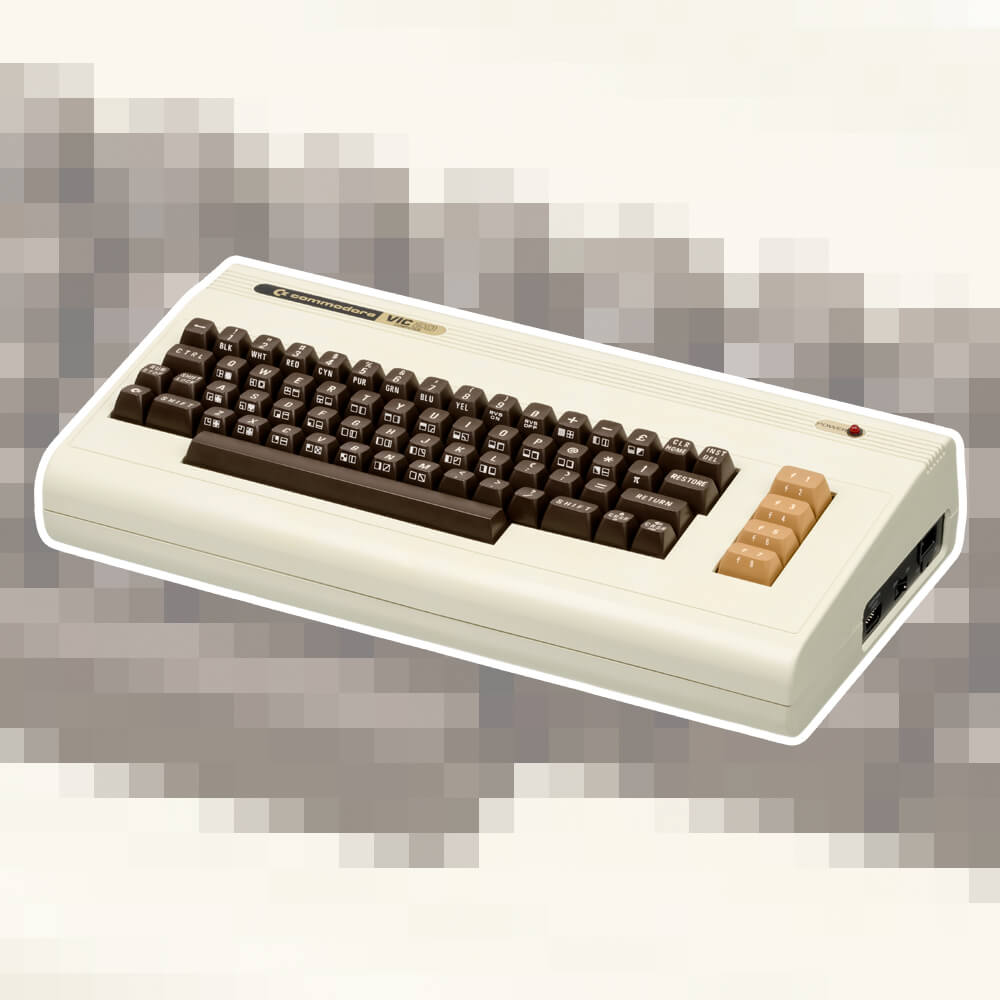Released initially in Japan in 1980 (as the VIC-1001) and then in the rest of the world in 1981.
The Commodore VIC-20 was Commodore’s first solely home computer and the first that sold one million units. Intended to be a more affordable personal computer solution than the PET.
Utilising the MOS 6502 clocked just above 1mhz, the system shipped with 5k RAM as standard. This was expandable to a maximum of 32k.
The VIC-20 was capable of connecting to specific monitors as well as a regular television when used with an RF modulator.
Shipped with a built-in 9-pin joystick port allowing users for the first time with a Commodore machine access gaming. Games were produced on both cartridge and cassette tapes. Most appeared on tape due to the affordable nature that cassette tapes offered in terms of production and distribution.
Commodore’s VIC-20 was extremely well received, undercutting competitors significantly with its low cost and capable specification.
The system was discontinued in 1985. Since the launch of the Commodore 64 in 1982, the system was up against its more powerful sibling. By 1983 the C64 had gained traction with developers adopting the platform, VIC-20 sales dropped significantly.
It’s successor, the Commodore 64 picked up where the VIC-20 had left off and become Commodore’s core product.

How To Emulate This System?
Commodore VIC-20 emulation is reasonably well catered for, we recommend taking a look at RetroArch if you are seeking an all-in-one solution. RetroArch emulates a large number of systems including the Commodore VIC-20. RetroArch is a front end that utilises emulator ‘cores’, it is reasonably easy to use and has lots of good supporting documentation on how to use it. RetroArch is available across a number of platforms including Windows, Mac, Android, iOS, Raspberry Pi, and many consoles. Take a look at our quick start guide for RetroArch which can get you up and running in 5 minutes.
The king of Commodore emulation has long reigned in the form of VICE (the Versatile Commodore Emulator). VICE provides emulation of pretty much all of Commodore’s systems except the Amiga.
It is the most complete all-in-one Commodore system emulator package available. We definitely recommended VICE as a single point to emulate most Commodore systems.
| Emulator | Description | Platform |
|---|---|---|
| VICE | The most configurable and advanced Commodore emulator, emulating a number of Commodore systems including the About The Commodore VIC-20. Certainly recommended if you want to play around with more in-depth settings. | Windows / OSX / Linux |

A lifelong avid gamer and computing enthusiast, Matt has decades of Retro Gaming experience. Now over 40 years old, Matt now even considers himself retro, but fortunately, nobody has developed a Matt emulator (not yet at least!).